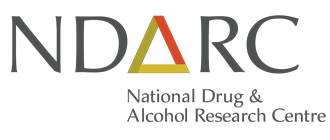
Estimates of the prevalence of alcohol use disorders (i.e. abuse and dependence) are consistently higher for younger adults compared to their older counterparts. Nationally representative surveys have indicated that one in five young Australians aged 18-24 years are diagnosed as having an alcohol use disorder, with evidence suggesting that after the age of 24 the prevalence declines rapidly. In response to this finding, the Australian government recently announced a $55 million initiative aimed at reducing alcohol misuse amongst young Australians. Whilst rates of alcohol use amongst young adults are clearly high, questions remain as to whether this “youthful epidemic” of alcohol use disorders is real or a methodological artifact of the prevailing classification criteria. The current project aims to resolve these questions.
Project Supporters
National Health & Medical Research Council - Project Grant|630414
The aims of the current project were to:
- Determine potential sources of bias in young adults’ interpretations of the diagnostic criteria for alcohol use disorders and,
- Propose practical recommendations for revision of these criteria for inclusion in upcoming editions of the major psychiatric classification systems
Design and Method
This project sought to build on our previous program of research by using the novel investigative techniques of cognitive interviewing derived from the converging fields of cognitive science and survey methodology to explore the reasons behind the apparent shortcomings in the alcohol use disorder criteria. These novel techniques quantify an individual’s understanding of the diagnostic criteria and signal potentially ambiguous or misunderstood criteria. The results of this project provided practical recommendations for modifications to the alcohol use disorders diagnostic criteria in the upcoming revised classification systems.
Benefits
The results of this project provide practical recommendations for modifications to the alcohol use disorders diagnostic criteria in the upcoming revised classification systems.
Findings
The results of this project demonstrated that some DSM-IV diagnostic criteria, particularly those centred on the self-reported motivations for drinking, may be misinterpreted by young adults, resulting in an over-estimation of the prevalence of alcohol use disorders. Further funding is being sought to investigate similar biases in reporting of other mental and substance use disorders.
- Overview
- News
- Our team
- References




